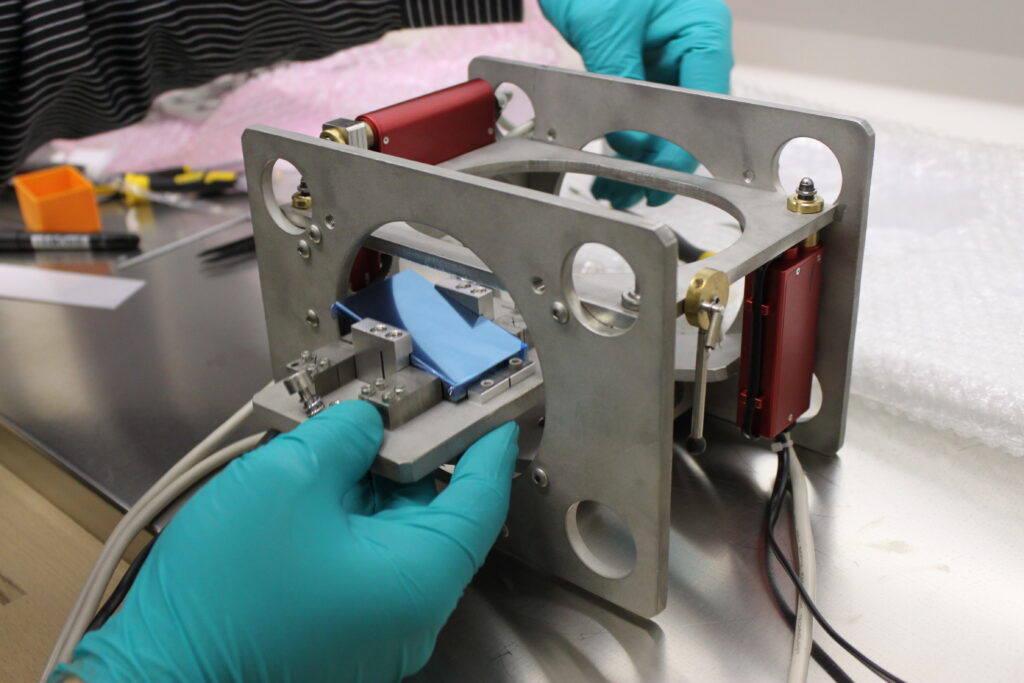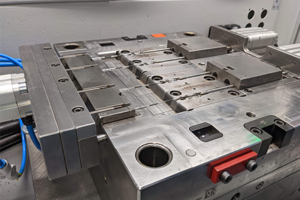For the ANKA synchrotron in Karlsruhe, holders and fixtures for germanium crystals were designed and manufactured. These, in the right configuration, function as a Bragg X-ray microscope. The system was designed so that it can be easily transferred to experiments on other synchrotrons.
The Bragg X-ray microscope
Germanium (or other) crystals in the right configuration can be used effectively as an X-ray microscope with sub-micron resolution. In order to realize such a microscope, an optomechanical system has been designed that meets the following requirements:
- A total of 4 crystals must be mounted, a pair for each direction of magnification (vertical and horizontal)
- Each pair of crystals must be able to be oriented relative to each other with a resolution of 0.1 arcsec
- The crystals need to be mounted in such a way that the different thermal expansion of the crystals and their mounts does not play a role in the temperature changes, both because of the change in the stress exerted in the crystals and to maintain the orientation of the crystals

In the end, the solution was two systems in which one crystal is always fixed and the other is adjustable relative to it in three axes by piezo actuators. The material of the mounts was chosen to be as close as possible to that of the actuators in order to achieve uniform expansion with temperature changes. The crystals themselves are fixed via a set of flexible joints that allow the holder and crystal to move together as the temperature changes in all directions, except for changes in the orientation of the crystal surface. Thus, the relative orientation of the crystals is maintained during temperature changes. A Tango server, i.e. software libraries, was also prepared for the device to integrate the device into the synchrotron control systems.
Measurements already performed on ANKA, Diamond Light Source and Spring 8 synchrotrons show the applicability of the device as an intermediate step between contact microscopy and zone-plate based microscopy, both in terms of performance and cost.
Other Case Studies




